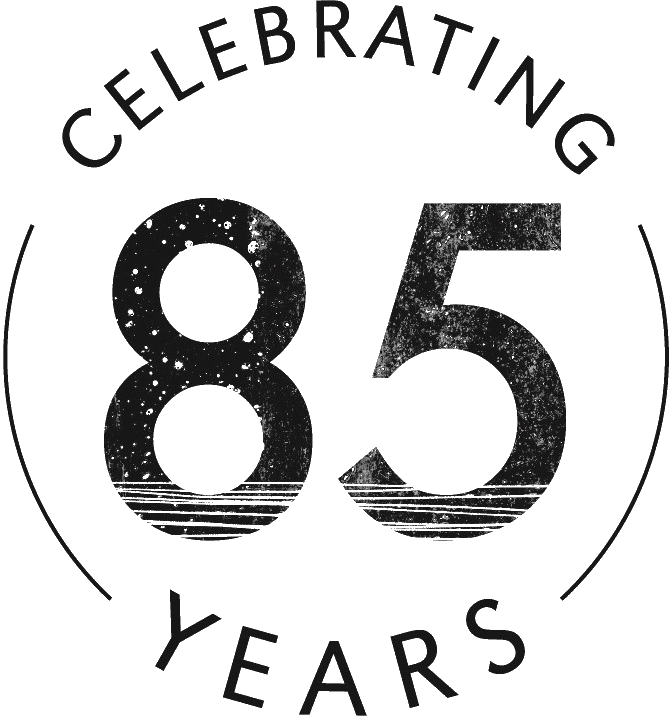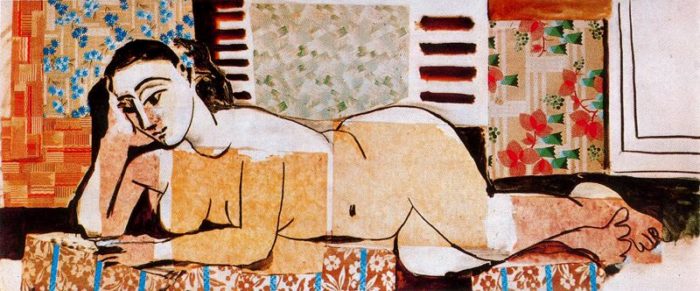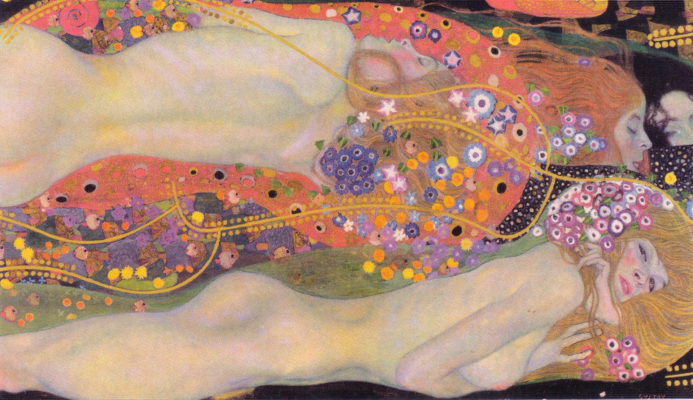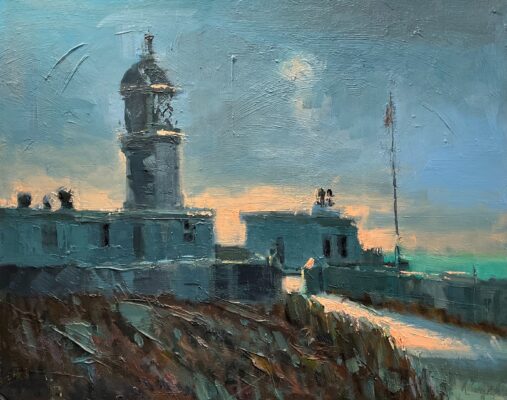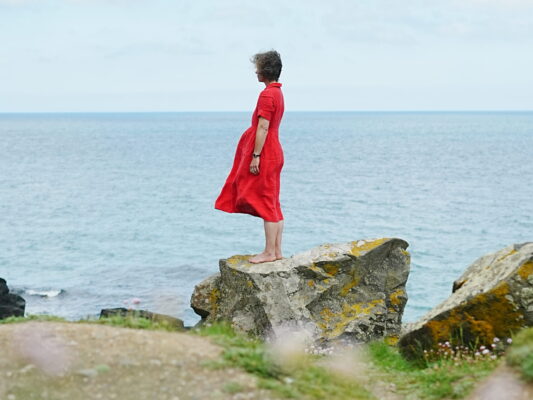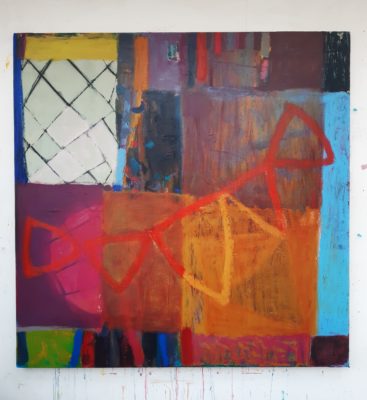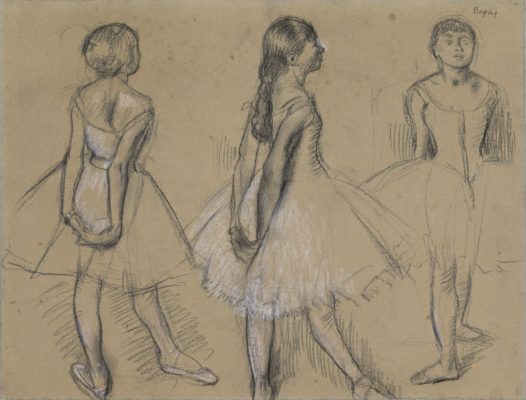Course details
Over 5 hours of tuition in bite-sized segments, to give you a thorough grounding in painting with watercolours. Learn essential techniques that will help you to avoid common mistakes in watercolour painting.
Ideal if you are a newcomer to watercolours, we have designed this self-paced course to give you the tips and tools you need to get started, from preparing your materials to executing your work. The course offers a step-by-step approach and is structured in chronological order, ensuring that each concept builds on the previous one, making it easier to grasp and apply the techniques progressively.
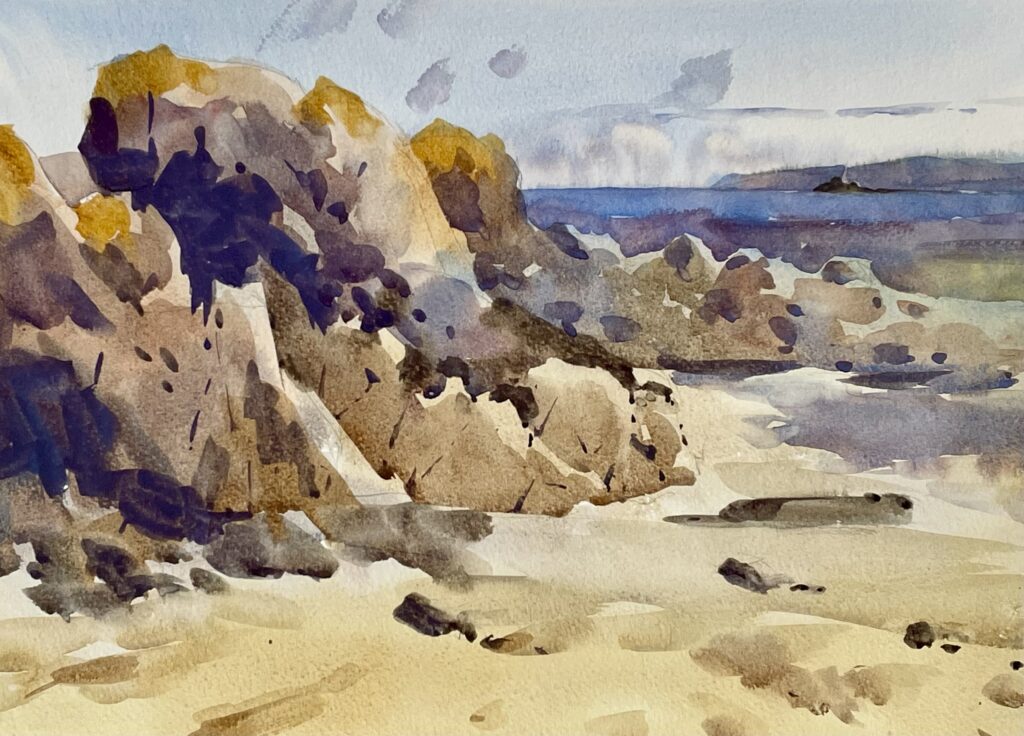
The course is taught by experienced artist and illustrator David Webb. David worked as an illustrator, mainly of natural history subjects, for over twenty years. He has written and illustrated various art books and regularly contributes articles to Leisure Painter magazine. Later on in his career David rediscovered his interest in painting with watercolours in a looser, more painterly style as opposed to his more detailed illustration work.
Drawing upon a wealth of experience, this carefully designed course harnesses David’s extensive background in watercolour painting. It offers an insightful and structured step-by-step approach, guiding you through the essentials of this beautiful art form. Whether you are a complete beginner or looking to refine your skills, you’ll find the tools and techniques presented here invaluable for your journey through the vibrant world of watercolour painting.
“The mistakes and problems commonly associated with watercolour are all things that I’ve had to overcome, and so it is quite satisfying to be able help a student to overcome their frustration and enable them to enjoy the medium”. David Webb
The course contains easy-to-watch demonstrations and exercises to complete at each stage. Begin by mastering brush and wash methods such as flat wash, graded wash, wet-into-wet and dry brush techniques, while learning to control paint-to-water ratios and avoiding common errors. Learn essential colour mixing techniques using cobalt blue, crimson and Indian yellow and how to create secondary and tertiary colours. Practice colour mixing both on the palette and directly on the paper, as well as layering washes to create glazes.
To consolidate your skills, complete three guided projects: painting a tree, working from a photographic reference and painting outdoors (en plein air). These projects help to develop your understanding of composition, form, light and shadow, and detail, helping you capture the essence of a scene. You will enhance your ability to notice details while sketching and gain confidence in mixing the necessary colours at home.
With six months of access, you will have ample time to learn at your own pace, watch the high-definition instructional films, and practice the exercises, helping you build confidence in using watercolour. It will serve as an excellent foundation for your ongoing journey with watercolour painting.
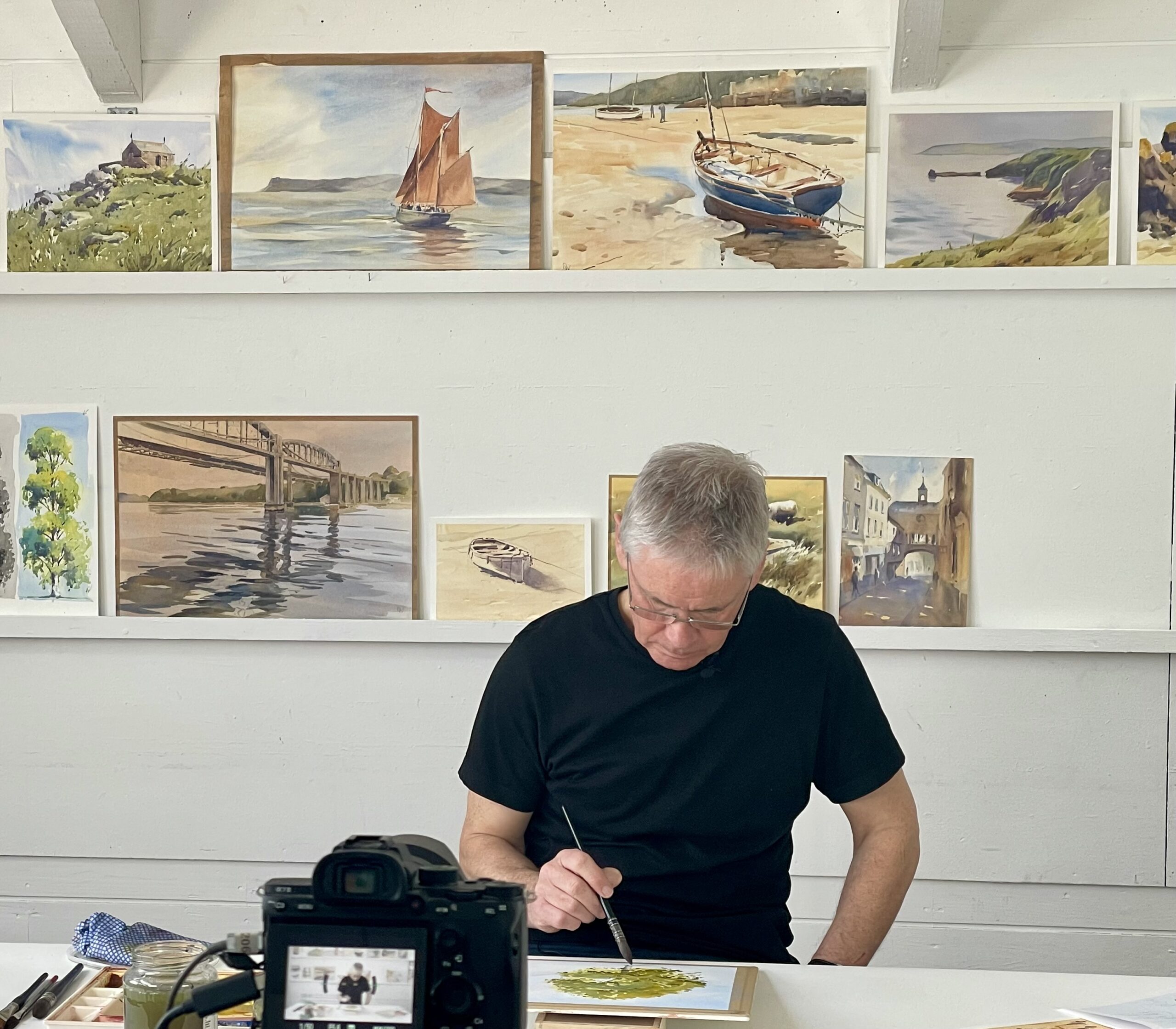
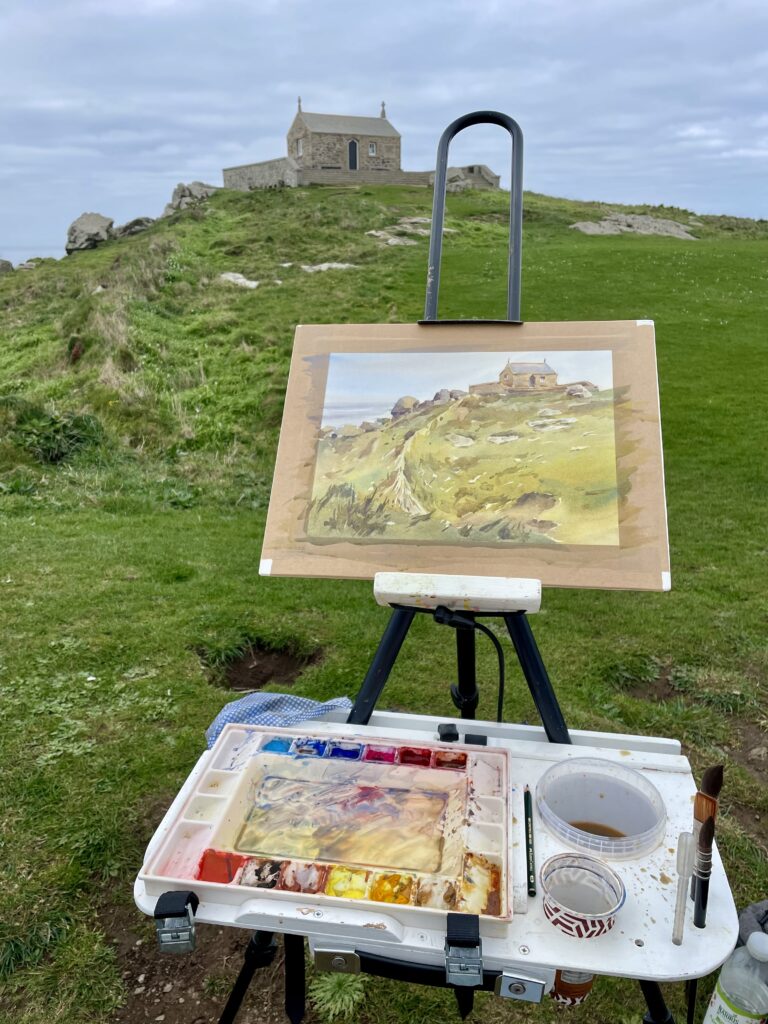
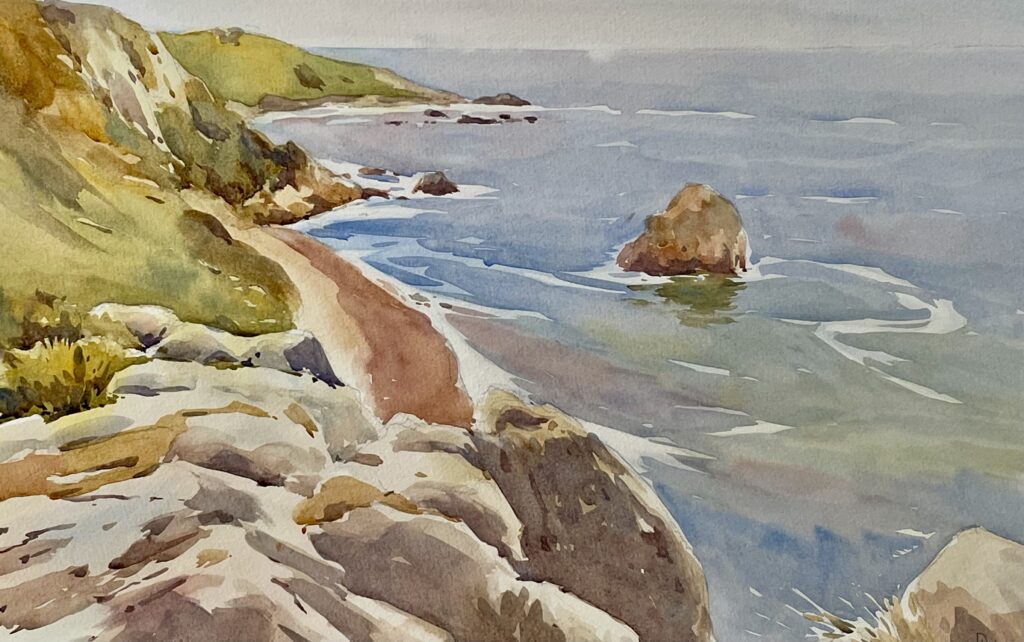
Course Content
This is a self-paced course consisting of five core chapters to set you up to paint with confidence.
Within these chapters are bite sized videos that will take you through the watercolour painting process step by step. A total of over 5 hours of instructional videos, to set you up on your watercolour painting journey.
Chapters include:
Setting Up: Introduction to the course, including information on brushes and paints, types of paper and workspace set up.
Brush and Wash Techniques: Learn essential watercolour exercises that focus on the right materials and the crucial paint-to-water ratio. Explore various painting techniques such as flat wash, graded wash, wet into wet, and dry brush. Discover techniques for applying watercolour while maintaining wash consistency and avoiding common mistakes.
Colour: Learn essential colour mixing techniques and build familiarity with colour combinations. Try methods of mixing colours both in a palette and directly on the paper and practise building up layers of washes to create glazes.
Stretching Paper: Learn how to stretch paper, an essential part of watercolour painting to prevent paper buckling and to achieve a smooth painting surface.
Projects: To further practice and develop your watercolour skills, David will guide you through three projects that build on brush and wash techniques and colour mixing. Elements include composition and frameing, building shapes and creating form, establishing tonal values, softening edges, depicting light and shadow, creating water effects, adding details and capturing the essence of a scene. The three extended projects in this course include: Painting a Tree, Painting from a photographic reference and Painting en Plein Air
What you will get out of this course
- An understanding of the properties of watercolour paint so you can have more control of the paint and get the effect you want.
- Confidence in colour mixing so you can develop your own personal palettes that you can recreate rather than rely on guesswork.
- The ability to put together your own watercolour painting kit and the knowledge to get the most out of it.
- Confidence in layering paint to create glazes.
- The skills to use watercolour paints to capture the essence of a scene.
Who would this course suit?
Whether you are a complete beginner in watercolour painting or looking to build your confidence with this medium, this course is an excellent starting point. With demonstrations and exercises to complete at each stage, it will help you gain confidence in using watercolours effectively.
Taught by
FAQs
Online Art Courses
How can I get help in choosing a course?
Our friendly expert staff are always happy to discuss your needs and our courses in more detail to help you with your decision. Please call us on 01736 797180
Do I need a webcam/any equipment?
For our webinar sessions which are broadcast on the internet and no webcam or microphone is needed as you just need to be able to see/hear hosts and you can communicate using the chat function. You can watch using a PC, Smart TV or tablet. A phone isn’t ideal as you will struggle to see enough unless you can miracast to a screen or smart TV.
For the longer online courses on Zoom you will need a laptop or tablet with audio and camera enabled so you can have a screen near where you are working. If you have a PC without camera or speakers, you can purchase a plug and play webcam for approx £25 which connects to a usb port. You will also need reasonable broadband connection and speed.
All the art materials and equipment needed to participate in the course will be listed in full on the online learning platform, for live webinars this will be a minimum of two weeks before the session starts.
I have registered for the webinar but I can't find my joining link
You can access all the resources and joining link for your webinar via our online learning platform. You will need to have set up an account on our online learning platform in advance. You can do this during the checkout process when purchasing your webinar. If you are having trouble accessing your online account, please contact [email protected]. You can use a PC or tablet or even cast from your phone to watch on your Smart TV.
I paid for the session but missed it, how can I watch?
Currently all our online sessions are recorded and you can access the recording on our online learning platform until it expires. Usually 60 days for a webinar, 90 – 180 days for multipart webinars or online courses.
Studio Courses
Can I bring my dog?
The studios are busy places with lots of equipment and not suitable for bringing a pet dog. We can accommodate assistance dogs with prior notice so we can make suitable adjustments. If you wish to bring an assistance dog please call 01736 797180 or email [email protected]
How can I get help in choosing a course?
Our friendly expert staff are always happy to discuss your needs and our courses in more detail to help you with your decision. Please call us on 01736 797180
How do I get my work home?
Tutors have special techniques for transporting oil paintings and for our 3 day courses we will give you a plastic folder with a handle. These are also available to purchase for £3.50 or do bring a portfolio.
Please note: For the course Bigger, Bolder, Braver with Boo Mallinson, we will provide a large A1 size plastic folder for your work but please consider how you will be able to transport the larger canvases home safely before signing up for the course as we will not be able to store large paintings in the studio. On this course you will be painting on a 50cms x 50cms and a 1m x 1m canvas alongside smaller pieces.
For international students we are happy to arrange transportation of your work back home, postal costs will be borne by you.
What do I need to bring?
Absolutely nothing! All materials and aprons are provided although some people do like to bring their own set of brushes.
What do I do for lunch?
Courses allow an hour’s break for lunch and there are numerous places nearby or you are welcome to bring a packed lunch into the studio.
What times do courses run?
Most of our courses start at 10am and end at 4.30pm on the first day. Subsequent days we start at 9.30am ending at 4pm.
Short workshops start at 10am in the Summer and 9.30am/ 1.30pm during September festival
Do you have to be experienced to come to the School?
The School is a very friendly and welcoming place for all ages and experience. Our drop-in life classes and August half-day workshops are ideal for those wanting to have a go for the first time. Most of our longer courses are also fine for novices as class sizes are small and our tutors are experienced in managing varying abilities within a group.
If any of the courses do need a bit of experience we flag this up on the website.
Booking a Course
How can I reserve a place?
We will hold a provisional reservation for 24 hours if you give us a call whilst you find accommodation. Otherwise please book online or by telephone 01736 797180.
You can reserve a place with a £100 deposit; balance is due 12 weeks before course start date.
About St Ives
Where do I park?
The nearest long stay public car parks are the Island and Barnoon Long Stay Car Park, both a 5 minute walk away. In the peak summer months it may be easier to park at Trenwith Car Park by the leisure centre and walk down into town. If you don’t fancy the walk up the hill at the end of the day there is a shuttle bus which runs from outside the cinema.
How do I get there?
Public Transport: If you are coming from further afield the main train line runs into St Erth which is a 15 min taxi ride away or you can take the St Ives Bay Line which runs approx. every 30 minutes. The School is a 10 minute walk from St Ives station.
Driving: M5 will take you to Exeter where we recommend that you take the A30 across Bodmin Moor and into Cornwall. After passing Hayle, leave the A30 at St Erth roundabout for St Ives. Turn right at the second roundabout. This road will take you through Lelant and Carbis Bay into St Ives.
Where can I stay?
St Ives has a huge selection of hotels, guest houses and self catering accommodation to choose from. Please browse the art holidays St Ives section on our website and give us a call if you would like any help.
